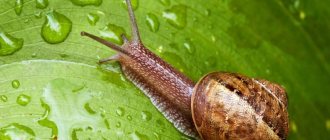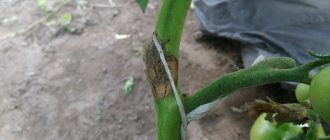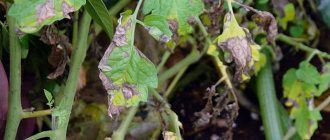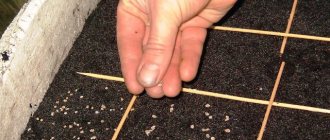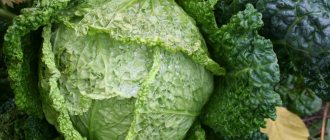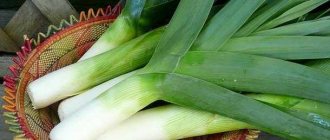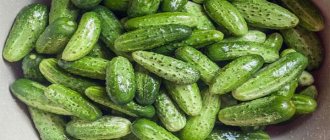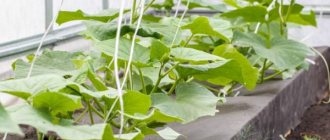Cabbage is very vulnerable to diseases. Its leaves have a rather delicate texture and are easily susceptible to mechanical damage. But after the head begins to form, it is better to use biological preparations for treatment, and they are known to have a weak effect. Hence the abundance of diseases. You can reduce the risk of disease by following preventive measures, but this does not always help. Below we will present cabbage diseases, as well as methods for preventing and controlling them.
Cabbage diseases and methods of combating them
Failure to comply with the rules of agricultural technology is one of the main reasons for plant infection by fungi and bacteria. Factors contributing to the development of cabbage diseases:
- violation of crop rotation principles;
- neglect of the procedure for disinfecting soil and seeds before sowing;
- planting seedlings in acidic soil;
- uncollected plant residues;
- waterlogging of beds;
- lack of fertilizing;
- application of nitrogenous fertilizers at the end of the growing season;
- invasion of pests that are carriers of pathogenic microorganisms.
Attention! Buying seedlings on the market always carries the risk of getting infected plants.
Diseases of cabbage in open ground often occur due to unfavorable weather conditions. Plants are stressed by temperature changes and become susceptible to infections. A gardener must be able to recognize the signs of various crop diseases in time and be able to deal with them. Competence in this matter will help preserve the harvest.
Bacterial and viral diseases
They arise not because of fungi, but because of improper care.
Characterized by the presence of mucus. Under their influence, the heads of cabbage change color to black. Such a vegetable requires elimination.
Mucous bacteriosis
The reason for the appearance is incorrect storage conditions. This cabbage disease occurs when the temperature in the room where the heads of cabbage are stored is exceeded. Other reasons are excessive watering, which causes the root system to rot, applying too large doses of nitrogen fertilizers, and failure to observe crop rotation.
Mucoid bacteriosis is formed due to bacteria. It can develop in 2 ways. The first is that the outer leaves rot. They are characterized by an unpleasant odor. The stalk begins to rot and becomes soft and watery.
Description of the second variant of the development of this cabbage disease:
- The head of cabbage begins to rot.
- Mucus appears on the leaves.
- The leaves are affected, becoming covered with mucus and acquiring a dark tint.
Control methods and prevention
It is impossible to save a crop that has been affected by mucous bacteriosis. Infected heads of cabbage should be discarded.
It is important to initially adhere to the rules for planting this vegetable crop:
- treat seeds with soap or manganese solution;
- before planting, treat the soil with 0.1% Phytobacteriomycin;
- observe optimal storage conditions (room temperature from -1 to 1°C);
- regularly inspect vegetables for pests or signs of disease;
- carry out disinfection in places where fruits are stored.
Vascular bacteriosis
Vascular bacteriosis affects the plant after rain or due to the adverse effects of pests. This cabbage disease can occur at any stage of vegetable development - when transplanting seedlings or even before harvesting.
Main features:
- first the edges of the leaves turn yellow;
- gradually they become dark;
- the vessels of the leaf blade become black;
- at the last stage, the leaves become dark yellow (sometimes even rusty) and fall off.
Fighting methods
Sick heads of cabbage need to be destroyed
If the affected heads of cabbage are not destroyed in time, the entire crop may become infected. This is due to the long life of the bacterium - it lives for about 2 years.
To overcome this cabbage disease, you need to treat the seedlings with Fitolavin-300. Consumption rate – 10-15 ml per 10 liters of water. This is enough to process 1-2 m2 of soil.
Another effective remedy is a 0.1% solution of Binoram. 200 ml of the drug is diluted in 10 liters of water. The solution is applied at the root. It is advisable to do this before it rains.
Prevention
You can plant cabbage in the place where the infected vegetable crop grew after 3-4 years. After eliminating diseased heads of cabbage and before planting new plants, the soil is treated at least 3 times.
Only treated seeds are planted. As a preventive measure, using folk methods, take a garlic solution: 25 g of garlic puree is diluted in a 200 ml glass of water. The seeds are infused in it for a maximum of 20 minutes, after which they are washed and dried. When growing, the roots of the sprouts are dipped in a mixture of mullein and Fitolavin-300.
Cabbage mosaic
This cabbage disease is transmitted through weeds infected with aphids. At the beginning of the development of the mosaic, the leaves lighten (become almost white). They stop growing and soon begin to wrinkle. Black spots gradually appear over the entire surface of the head of cabbage.
Control methods and prevention
- Weed control. They need to be cleaned constantly, because... they tend to multiply quickly and spread throughout the garden bed.
- Fighting aphids. First, you need to fight not with the insects themselves, but with the ants. You need to find their nests and fill them with boiling water or kerosene.
The affected heads of cabbage are dug up. You can’t just throw them away, just burn them. Then the virus will not spread to other vegetable crops.
Clubroot
The cabbage disease, clubroot, is fungal in nature. The disease is caused by a parasitic fungus - Plasmodiophora. It affects only young plants planted on a plot or in a greenhouse. Seedlings in containers exposed to ventilation may become infected.
The root of an infected plant is covered with growths of various shapes. Such formations interfere with the normal nutrition of cabbage, as a result of which they gradually wither, lag behind in development, and can be easily pulled out of the soil.
Clubroot attacks white cabbage and cauliflower. The planting location does not matter since the fungus is spread by wind, rain and insects. Clubroot does not belong to the group that includes cabbage diseases that are especially dangerous for yield, and the measures taken to combat them are not aggressive.
In the process of controlling clubroot, only prevention of spread is used to prevent infection of neighboring cruciferous crops and beds. To do this, you should not plant diseased seedlings. Weakened and dead sprouts must be removed along with a lump of earth, and the holes must be sprinkled with lime. Before planting seedlings in the soil, it is recommended to treat the soil with lime at the rate of 1 kg per 4 sq.m.
Fungal infections
Fungal infections significantly reduce soil fertility and often lead to complete loss of vegetable yields. Each individual fungal disease affects both a separate variety of cruciferous vegetables and the entire cabbage family as a whole.
Kila
Cabbage clubroot is caused by a fungal pathogen and affects exclusively young plantings planted in open soil. It can be transferred along with seedlings that were infected at the stage of their cultivation in containers exposed for ventilation and hardening.
At risk of infection with clubroot are white and colored varieties.
As plants are damaged, their root system gradually becomes covered with growths that prevent the normal supply of mineral nutrition and fluid. As a result of starvation and lack of water, the cabbage plant gradually lags behind in its development and withers.
Downy mildew
Downy mildew, or powdery mildew, is caused by a pathogen of fungal origin. It affects all species of the cruciferous family. Among the primary signs:
- manifestation of fungal infection even at the stage of growing seedlings,
- the appearance of gray and yellow spots on the foliage and a white coating on the underside of the leaves,
- gradual withering and death of affected cabbage leaves,
- slowing down the growth and development of vegetable crops.
The main factor that contributes to the development and spread of powdery mildew is increased humidity.
Fusarium
The fungal pathogen Fusarium infects all varieties of cruciferous crops, penetrating into the vascular plant system, creating obstacles to the passage of food and water and leading to wilting of the vegetable crop.
Signs of damage:
- the appearance of yellow spots on the leaves between the veins, increasing in area up to a full leaf,
- gradual drying of leaves,
- the presence of brown spots from fungal mycelia on the sections at the base of the leaves,
- small size of the head of cabbage and its irregular shape.
Penosporosis
The disease penospora (Peronospora parasitica Gaeum), also known as downy mildew, which is common in film greenhouses, can cause significant damage to the crop. It appears in the form of yellowish spots on the front side of the leaves, while a gray coating appears on the back side of the leaf. Affected leaves quickly become deformed and die. If the disease is not dealt with, the plant’s blood vessels begin to become infected.
Penosporosis develops at temperatures of +15...+25 degrees and high humidity. The fungus can live in plant debris on the site or on seeds. Precautionary measures include maintaining crop rotation, clearing the area of any plant debris, and sowing healthy seeds.
Control measures. If the disease appears on cabbage, you need to treat it with Phytophthora. This is a strong biological drug.
Alternaria blight
We recommend reading our other articles
- Radish Cherryat F1
- Grape variety Victor
- Autoclave Belarus Lux
- Vidnaya pear variety
Alternaria brassicae, A. brassicicola, A. raphani are the causative agents of the cabbage disease Alternaria. This is the most common disease, since its pathogens are found in regions with different climatic conditions. The lesion is revealed in black necrosis on certain parts of the cabbage. The heads of cabbage become unpresentable, and their taste deteriorates.
The disease develops most actively in a humid environment and at high air temperatures. Its distributors are weeds and infected seeds. From this we can derive preventive measures: maintaining normal temperature, humidity (watering), observing crop rotation, using treated cabbage seeds and timely removal of weeds.
Control measures. It is believed that Alternaria will not appear on the plant if the seeds are treated with TMTD. This remedy helps well in this case. But it cannot be used to treat already mature crops (formed heads of cabbage)! If Alternaria appears on a formed head of cabbage, it must be removed from the site as soon as possible.
Fusarium
Fungal diseases of cabbage are very common, and combating them is not difficult if detected and treated in a timely manner. Fusarium is such a disease.
The causative agent of Fusarium wilt or tracheomycosis is the fungus Fusarium oxysporum f. sp. conglutinans. The disease affects all types of cruciferous crops. The fungus, penetrating into the vascular system of plants, clogs it, causing wilting. This disease is popularly called jaundice due to the characteristic symptoms:
- yellow spots appear between the veins;
- gradually the entire leaf turns yellow and dries out;
- on the cut of the base of the leaves, brown spots are visible - the mycelium of the fungus;
- the established head of cabbage is very small and has an irregular shape.
As with all fungal diseases, in case of Fusarium wilt it is recommended to remove infected plants and treat the plantings with systemic benzimidazoles fungicides: Benomyl, Tecto, Topsin-M.
The fungus can maintain its vital activity in the soil for several more years, so it is necessary to follow the rules of cabbage crop rotation - do not plant in one place several times in a row, and also remove plant debris from the soil.
Blackleg
Not only cabbage, but also many other vegetables, such as tomatoes, can suffer from blackleg. This disease affects the youngest, recently sprouted seedlings, as a rule, in greenhouses (the fungus that causes it loves greenhouse conditions, especially high humidity), most often with thickened sowing and poor lighting. The name of the disease well defines the main symptom: in infected plants, the stems near the root collar darken (in cabbage, the blackness seems to show through the stem) and become thinner.
Then the thinned stem cannot withstand the weight of the growing leaves, and therefore the seedlings bend and lie down. In greenhouses, sometimes you can immediately see what appears to be a bald patch of crooked and fallen plants. Then the severely affected seedlings die, the rest may recover, but they will no longer be able to grow well and produce a normal harvest, because during the illness some of their roots die off.
Preparations for the treatment of an already established disease on cabbage are usually not used; diseased plants are destroyed, and in order to stop further infection and increase the resistance of seedlings, conditions in the greenhouse or greenhouse are improved: increased ventilation, reduced watering, pruning thickened plantings, discarding all diseased or questionable plants and After this, pour a layer of sand up to 2 cm over the soil. Before planting such seedlings in the ground, they are rechecked again and plants with signs of disease are again discarded. But it’s even better to prevent infection and use all preventive measures for this: steam treatment, treating seeds with fungicides and the soil for seedlings with them (this is done in advance), combating waterlogging, timely and, if necessary, additional picking of thickened plantings and good lighting, that is, in fact, correctly follow the rules of agricultural technology.
White rot
The causative agent of cabbage white rot is the fungus Sclerotinia sclerotiorum. Plants become infected in open ground at the end of the growing season. Favorable conditions for the proliferation of pathogens are high humidity and low air temperature.
Signs of white rot:
- outer leaves become slippery due to mucus formation;
- white mycelium resembling cotton wool is found between the leaf blades;
- Black sclerotia of various sizes are formed on the surface of the lesions.
Attention! The development of the disease can be avoided if the crop is harvested on time. White rot primarily affects mechanically damaged and frozen heads of cabbage.
Downy mildew
cabbage diseases
This disease is popularly called powdery downy mildew. This is another type of fungal infection of a cultivated plant. Like Kila, it affects almost all cruciferous species. The disease can be identified when it has already been activated by certain signs:
- manifestation occurs already at the seedling stage;
- grayish and yellow spots form. The leaf cover is mainly affected. A white coating may form on the underside;
— there is a gradual withering of the leaves followed by death;
- development and nutrition occur very slowly.
High humidity outside, in a greenhouse, or in a greenhouse are the most favorable conditions for powdery mildew parasitism.
If you consider the scale of the threat when a disease appears on your crops, you can safely prepare for the destruction of the entire crop. After all, the disease spreads by spores. And with the slightest wind, rain, increased activity of insects, the troubles faced by gardeners will become greater.
Cabbage diseases have been known for a long time and there are a lot of control methods. But experienced farmers have identified a couple of the most effective: Late blight and Ridomil Gold, which have proven themselves only from the best side.
But let us clarify right away that these are drugs of chemical origin, and their actions can even be called aggressive. It should be used only according to the instructions, without amateur activities.
For lovers of everything safe, who are wary of all chemical treatments, we can recommend a 1% solution of Bordeaux mixture. Use it to spray plantings. Dilute in the following ratio: 200 grams of mixture per bucket of water.
When the plants are already strong enough, the mixture needs 500 grams for the same amount of water.
No one has canceled preventive measures that contribute not only to the fight, but also to the prevention of the disease. These methods can be considered:
— mandatory soil disinfection. It is also advisable to disinfect the planting material. It is necessary to regulate soil moisture. Watering with cold water is not allowed. It contributes to the rapid development of the disease;
— annual compliance with crop rotation. Beans, potatoes, and cucumbers are good predecessors for cabbage. You can plant it in the area where green manure, such as mustard, was previously grown. Planting cabbage in the same place every year is contraindicated.
Gray rot
The causative agent of gray rot is the fungus Botrytis cinerea Pers. It parasitizes on damaged and weakened heads of cabbage. Favorable conditions for the proliferation of pathogens are rainy, cool weather.
The disease can be detected by its characteristic gray fluffy coating. Dark dots are visible on the leaf blades - sclerotia. When severely damaged, the heads of cabbage become covered with a thin layer of mucous secretion and begin to rot.
Attention! Gray rot is often a precursor to another cabbage disease - mucous bacteriosis.
Cabbage mosaic
Viral diseases of cauliflower are much less common than fungal diseases, and the fight against them raises many questions. Mosaic caulivirus is the causative agent of the cauliflower mosaic virus. Despite the name, it is the most dangerous disease of all cruciferous crops, including all types of cabbage.
Its manifestation can be detected only a month after planting the seedlings: dark green edges appear on the leaves along the veins; Necrotic spots gradually form between the veins.
Vascular bacteriosis
Vascular bacteriosis of cabbage affects plants at any stage of the growing season. Warm, humid weather promotes the development of pathogenic microflora. Bacteria enter the plant from contaminated soil or through damage to leaves and stems left by pests.
Symptoms of vascular bacteriosis:
- slow plant growth;
- yellowing of leaf blades (starts from the edge and gradually spreads to the center);
- darkening of vascular veins.
Heads of cabbage with signs of vascular bacteriosis cannot be stored, as the infection will quickly spread to healthy forks. In the early stages of the disease in the garden, plants are treated with Trichodermin. Severely damaged specimens are removed from the garden bed.
Mucous bacteriosis of cabbage
The disease mucous bacteriosis of cabbage is provoked by pathogenic bacteria that penetrate the plant in two ways - through damaged roots or leaves. Depending on the method of infection, the process of disease development differs:
- If the infection enters the plant through the root system, the rotting process begins inside, in the stalk. Later, the leaves located in the middle of the head become soft and moist. The head of cabbage completely rots away from the stump, and the plant dies.
- If bacteria enter the plant from the outside, the upper leaves rot first. Their structure changes, and mucus forms on the surface. At the same time, the head of cabbage smells unpleasant.
Attention! Mucous bacteriosis does not always appear in the garden. The disease can make itself felt after harvesting and storing vegetables.
The most common causes of infection are damage to heads of cabbage, application of nitrogenous fertilizers at the end of the growing season, and rainy weather.
Ways to protect cabbage from viral infections
Mosaic is viral in nature and cannot be treated with insecticides. That is why it is necessary to pay special attention to prevention:
- disinfect seeds before planting;
- remove affected plants along with the soil in a timely manner;
- remove weeds that may carry the virus;
- fight parasites.
Mosaic is most often transmitted by mechanical damage and sucking insects (aphids, mites), so it is necessary to effectively combat pests that carry the virus.
Dangerous cabbage pests and methods of combating them
Diseases and pests of cabbage are closely related to each other. Insects feeding on the juice and pulp of the leaves of the plant leave open wounds on it, into which pathogenic microorganisms penetrate. This means that the gardener must try to protect the beds from the invasion of uninvited guests.
The main pests of cabbage:
- sap-sucking - aphids, whiteflies, cruciferous bugs and flea beetles;
- leaf-eaters – caterpillars, slugs;
- Root-eating larvae of spring and summer cabbage flies.
To prevent pest infestations, folk remedies are used. Wood ash is used to repel insects; it is used to dust bushes and sprinkle the soil under them. To spray plants, prepare a decoction of onion peels, an infusion of garlic, and a soap-ash solution.
Attention! If the gardener’s actions against pests are ineffective, it is worth using bioinsecticides, which are created on the basis of living microorganisms. Their main advantage is safety for humans, animals and birds.
Chemical pest control products are used as a last resort, when insect colonies are steadily increasing and there is a threat of crop loss. It is important to remember that chemicals take a long time to be removed from the cells of garden crops, so they are not used to treat cabbage at the final stage of the growing season.
Having discovered yellow, black or white spots, holes, signs of wilting or other alarming symptoms on cabbage leaves, the gardener should try to preserve the harvest. It is better to destroy diseased plants immediately and treat the soil under them with fungicides. Healthy specimens need special care. To protect them from infection, you will have to improve the quality of care, apply mineral fertilizers, and pour Trichodermin solution under the bushes for prevention and spray the plantings with Bordeaux mixture.
Scab
Scab occurs more often on fruit trees, but can sometimes affect cabbage heads. The main features include:
- detachment of cuticles and skin from the fruit;
- shapeless spots;
- ulcers and warts.
Related article:
Spring processing of currants
After the formation of new growths, cracks may appear on the fruits, which will lead to rotting. The spread of scab is facilitated by air humidity exceeding 70%, soil acidity at 7 pH and moderate temperatures (up to 20 degrees). For treatment, biological preparations or a solution of Bordeaux mixture are used.

